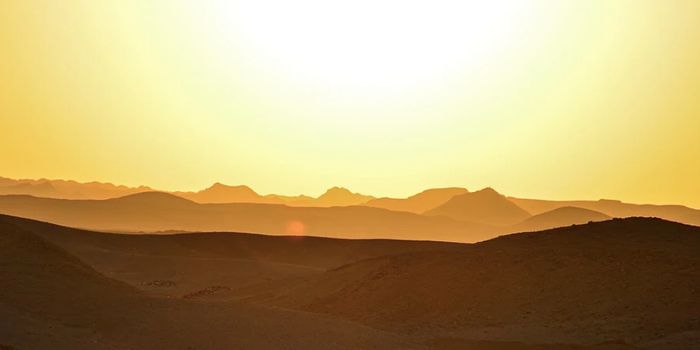What Is Muon Tomography and How Does It Help Finding Cavity in Pyramid
According to a study published in the journal Nature, large space was discovered within the Great Pyramid in Egypt, the first major one since the 19th century. Using an imaging method called muon tomography, an international collaboration group has detected a previously unknown internal structure in the last of the ancient Seven Wonders on the outskirts of Cairo.
The newly discovered void is located above the "Grand Gallery". Credit: ScanPyramids mission
The muon is an elementary particle. It has -1 electric charge like the electrons but also a mass 200 times greater than an electron. It is classified as a lepton in the standard model of physics and cannot break down into any simpler/smaller particles.
As a part of cosmic radiation, muons reaching on the Earth's surface are the decay products of collisions between cosmic rays and the Earth's atmosphere. They bombard the Earth at close to the speed of light and can penetrate deeply into solid objects. Muon tomography is a technique that uses cosmic ray-produced muons to generate three-dimensional images of volumes. Placing detectors inside a pyramid can help researchers identify cavities inside the immensely large and dense structure without any digging or tunneling.
Since muons have much stronger penetrating power than X-rays, muon tomography is often used to image through much thicker materials than X-ray tomography, i.e. CT. Since its development in the 1950s, muon tomography has taken many forms, the most important of which are muon transmission radiography and muon scattering tomography. Muon imagers are under development for the many different applications, from detecting nuclear material in transit to monitoring potential underground sites used for carbon sequestration, and even checking nuclear reactors for damages.
The discovery was announced on Thursday, Nov 2nd by a group calling themselves the ScanPyramids project. The internal structure was believed to be at least 30 meters (100 feet) long and located above a hallway measuring about 47 meters (155 feet) long called the Grand Gallery, one of a series of passageways and chambers inside the Great Pyramid.
Exciting as the news was, scientists did not know or wish to speculate on the purpose or contents of what they are calling a void or cavity. "What we are sure about is that this big void is there, that it is impressive, that it was not expected by, as far as I know, any theory," said Mehdi Tayoubi, president, and co-founder of the HIP Institute in France, a senior author of the study report.
The Great Pyramid of Giza, also known as the Pyramid of Khufu, dates back to around 2560 BC. It is the oldest and largest of the three pyramids in the Giza pyramid complex.
ScanPyramids 2017. Credit: NPG Press
Source: CBC









